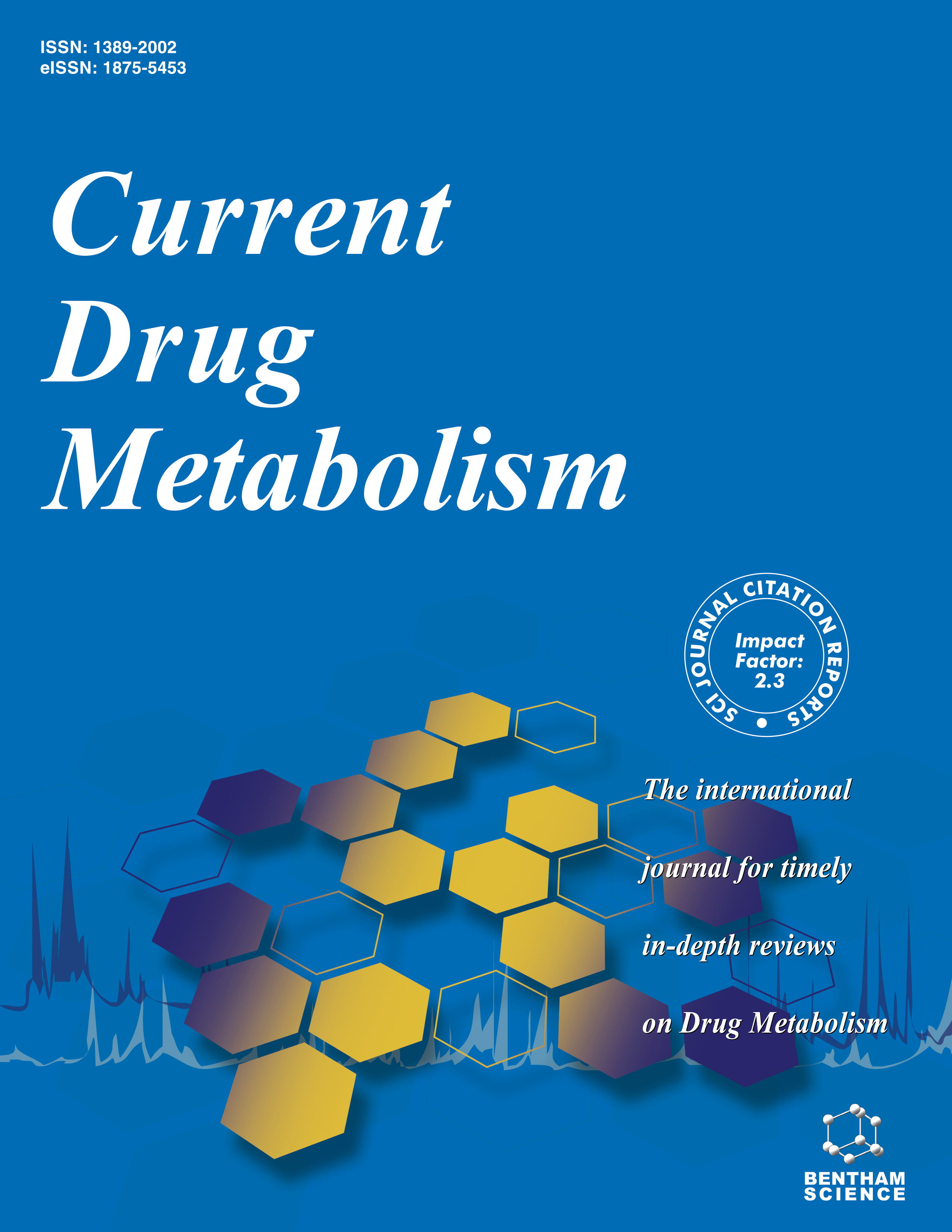- Home
- A-Z Publications
- Current Drug Metabolism
- Previous Issues
- Volume 16, Issue 9, 2015
Current Drug Metabolism - Volume 16, Issue 9, 2015
Volume 16, Issue 9, 2015
-
-
Effects of Drug Transporters on Pharmacological Responses and Safety
More LessAuthors: Chang-Xiao Liu, Xiu-Lin Yi, Hui-Rong Fan, Wei-dang Wu, Xing Zhang, Xue-Feng Xiao and Xin HeRecently, it is realized that transporters, apart from enzymes, play a key role in drug metabolism and pharmacokinetics. More and more pharmaceutical researchers focused on transporter study and found that drug transporters not only involved in pharmacokinetics including absorption, distribution, metabolism and excretion (ADME) but also in Drug-Drug interactions (DDIs). DDIs induced by drug transporters Read More
-
-
-
Interaction of Drug or Food with Drug Transporters in Intestine and Liver
More LessAuthors: Takeo Nakanishi and Ikumi TamaiOral bioavailability (F) is determined as fraction of the drug dose absorbed through the gastrointestinal membranes (Fa), the unmetabolized fraction of the absorbed dose that passes through the gut into the portal blood (Fg), and the hepatic first pass availability (Fh), namely F is expressed as the product of Fa, Fg and Fh (F = FaFgFh). Current evidence suggests that transporter proteins play a role in intestinal abs Read More
-
-
-
Physiologically based in vitro Models to Predict the Oral Dissolution and Absorption of a Solid Drug Delivery system
More LessAuthors: Ziqiang Li and Xin HeTo understand the sophisticated dynamic behaviors of drug elution and permeation in the gastrointestinal tract (GIT), researchers have tried to reemerge it by employing various in vitro experimental models. However, official in vitro apparatuses routinely used for quality control purposes, employ simple, non-physiologic buffers, and hydrodynamics conditions, and can not accurately perform continuous, dynamic in vivo pha Read More
-
-
-
Mass Spectrometry Imaging: Applications in Drug Distribution Studies
More LessAuthors: Yuan-Sheng Zhao and Chuan LiIn the past decade, mass spectrometry imaging (MSI) has received an increasing amount of attention due to its ability in displaying the spatial distribution of a wide range of molecules, including peptides, proteins, lipids, endogenous and exogenous metabolites, and xenobiotics in biological tissues. Information regarding drug localization within tissues provides a better understanding of pharmacokinetic behaviors and pharm Read More
-
-
-
Phthalocyanine-Biomolecule Conjugated Photosensitizers for Targeted Photodynamic Therapy and Imaging
More LessAuthors: Zafar Iqbal, Jincan Chen, Zhuo Chen and Mingdong HuangPhotodynamic therapy (PDT) is now in clinical practice in many European and American countries as a minimally invasive therapeutic technique to treat oncologic malignancies and other nononcologic conditions. Phthalocyanines (Pcs) are gathering importance as effective photosensitizers in targeted PDT and imaging of tumors. The possibility of modification around the Pc macrocycle led the researchers to the synthesis of a Read More
-
-
-
Association of flavonoid-rich foods and statins in the management of hypercholesterolemia: a dangerous or helpful combination?
More LessAuthors: Ilaria Peluso, Maura Palmery and Mauro SerafiniStatins and dietary modifications are the cornerstone of hypercholesterolemia management. Although it is well known that possible adverse effect of statins can occur due to drug-drug interactions, food-drug interactions are a commonly overlooked aspect. In particular, flavonoids could interfere with statins’ bioavailability through different mechanisms, such as competition with cytochrome P450 (CYP) enzymes, esterase Read More
-
Volumes & issues
-
Volume 25 (2024)
-
Volume 24 (2023)
-
Volume 23 (2022)
-
Volume 22 (2021)
-
Volume 21 (2020)
-
Volume 20 (2019)
-
Volume 19 (2018)
-
Volume 18 (2017)
-
Volume 17 (2016)
-
Volume 16 (2015)
-
Volume 15 (2014)
-
Volume 14 (2013)
-
Volume 13 (2012)
-
Volume 12 (2011)
-
Volume 11 (2010)
-
Volume 10 (2009)
-
Volume 9 (2008)
-
Volume 8 (2007)
-
Volume 7 (2006)
-
Volume 6 (2005)
-
Volume 5 (2004)
-
Volume 4 (2003)
-
Volume 3 (2002)
-
Volume 2 (2001)
-
Volume 1 (2000)
Most Read This Month
Article
content/journals/cdm
Journal
10
5
false
en


